Thoracic Surgery
Our chest is home to some of the most important parts of the body- the lungs, esophagus (the tube that carries food from the mouth to the stomach), windpipe, and the space between the lungs (called the mediastinum). Thoracic surgery is a type of surgery that helps treat problems in these organs, especially when medicine alone is not enough.
If you are facing issues like lung or esophagus cancer, trouble breathing, or chest pain that won’t go away, thoracic surgery may be the right solution.
What is Thoracic Surgery?
Thoracic surgery means surgery done in the chest area. It is used to treat problems such as:
- Lung cancer
- Esophagus cancer
- Tumors in the middle of the chest
- Fluid buildup around the lungs
- Problems with the windpipe
- Injuries to the chest
These problems can cause serious symptoms like persistent cough, difficulty breathing, chest pain, or trouble swallowing food. Thoracic surgery helps by removing tumors, fixing damaged areas, or clearing fluids, so the body can work properly again.
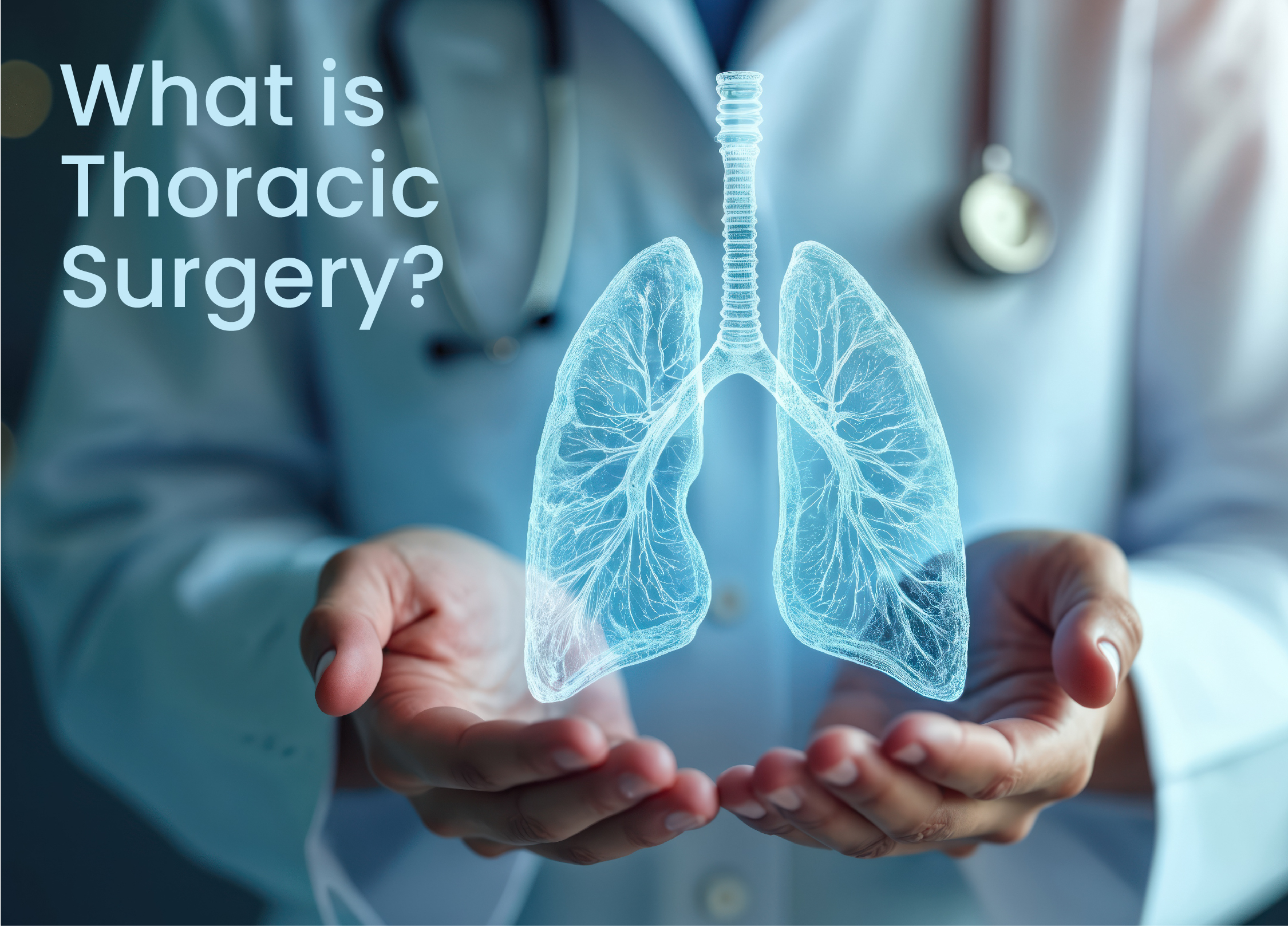
Common Types of Thoracic Surgery
- Surgery for Lung Problems:
Lung cancer is one of the most common reasons people need thoracic surgery. Depending on the size and type of the tumor, the surgeon may:
- Remove a part of the lung (called lobectomy).
- Remove the entire lung (called pneumonectomy) when necessary
- Remove only a small piece of lung (called wedge resection), especially when the problem is small and localized
Modern techniques allow surgeons to perform these operations through small cuts (called minimally invasive surgery), so there is less pain and faster recovery.
- Surgery for Esophagus Problems:
The esophagus is important for swallowing. In cases of cancer or narrowing, surgery may be needed to remove the diseased part and allow the person to swallow food normally again.
- In many cases, part or all of the esophagus is removed (esophagectomy), and the surgeon reconstructs the pathway so that food can still pass from the mouth to the stomach.
Small cuts and special cameras are often used, making the surgery easier on the patient.
- Tumors in the Mediastinum:
The mediastinum is the area between the lungs. Tumors may grow here and press on important organs like the windpipe or large blood vessels.
- The surgeon removes these tumors carefully, sometimes removing the thymus gland if needed (thymectomy).
Removing these tumors helps the patient breathe better and prevents further health problems.
- Pleural Surgery
Dealing with Fluid or Infection Around the Lungs Sometimes, fluid or infection can build up around the lungs, making it hard to breathe.
- In such cases, the surgeon removes the fluid or infected tissue to allow the lungs to expand normally.
This surgery makes breathing easier and prevents serious lung infections.
How Modern Surgery Makes Recovery Easier?
Instead of large cuts that take months to heal, modern thoracic surgery often uses small cuts and tiny cameras (called Video-Assisted Thoracoscopic Surgery or VATS). This means:
- Less pain after surgery
- Smaller scars
- Shorter hospital stay
- Faster recovery
Robotic surgery takes this even further. The surgeon uses advanced machines that allow them to perform very precise movements inside the body, which is especially helpful in tricky cases.
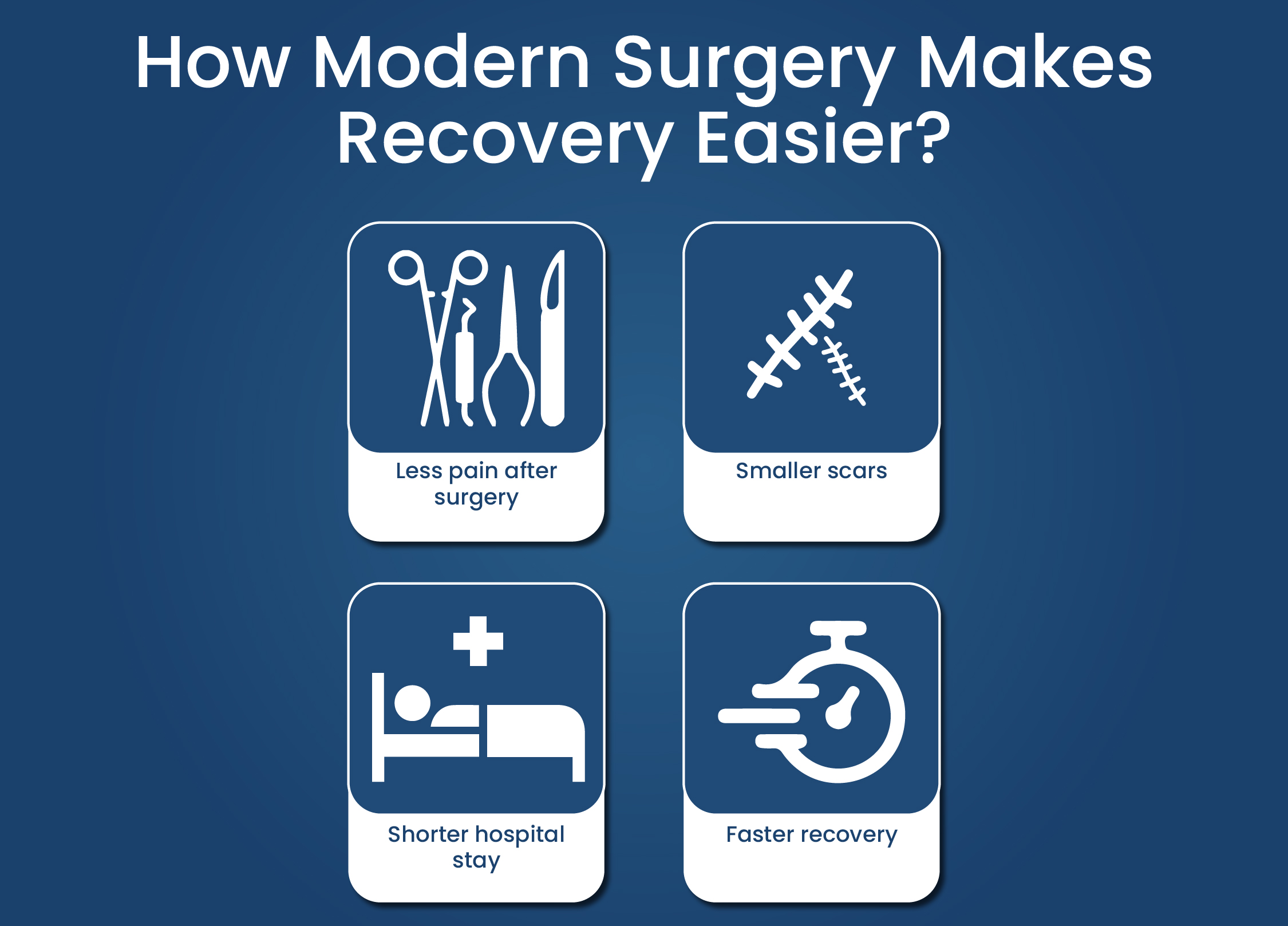
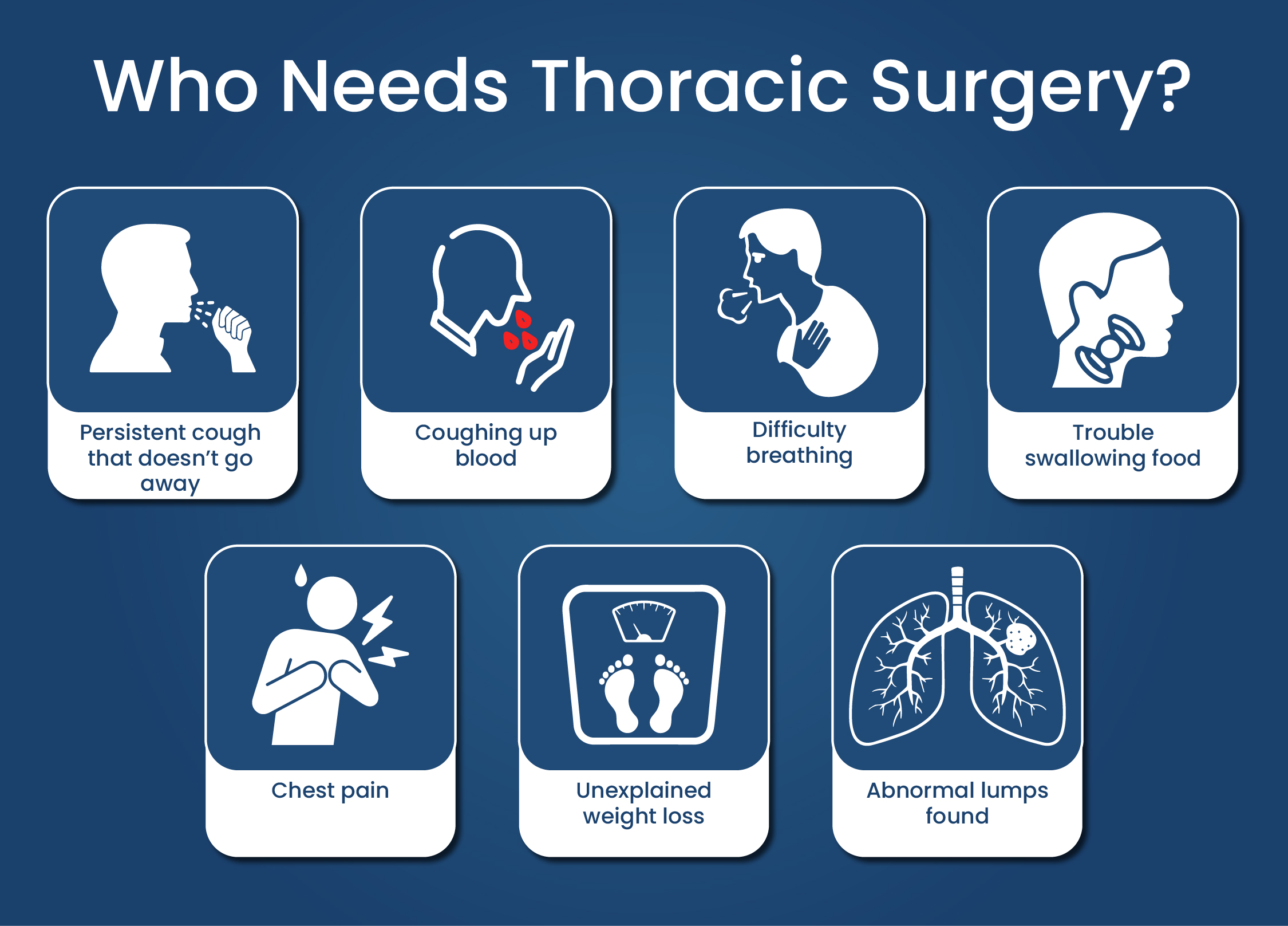
Who Needs Thoracic Surgery?
People who should consider thoracic surgery include those who have:
- Persistent cough that doesn’t go away
- Coughing up blood
- Difficulty breathing
- Trouble swallowing food
- Chest pain
- Unexplained weight loss
- Abnormal lumps found on chest X-rays or CT scans
Early surgery can stop the disease from getting worse and helps patients live healthier, longer lives.
What Happens Before and After Surgery?
Patients undergo several tests to make sure they are fit for surgery, such as:
- ChestX-ray, CT scan, or MRI
- Lung function test
- Blood test
- A detailed discussion about the surgery process
This helps the doctor understand the problem clearly and plan the safest way to operate.
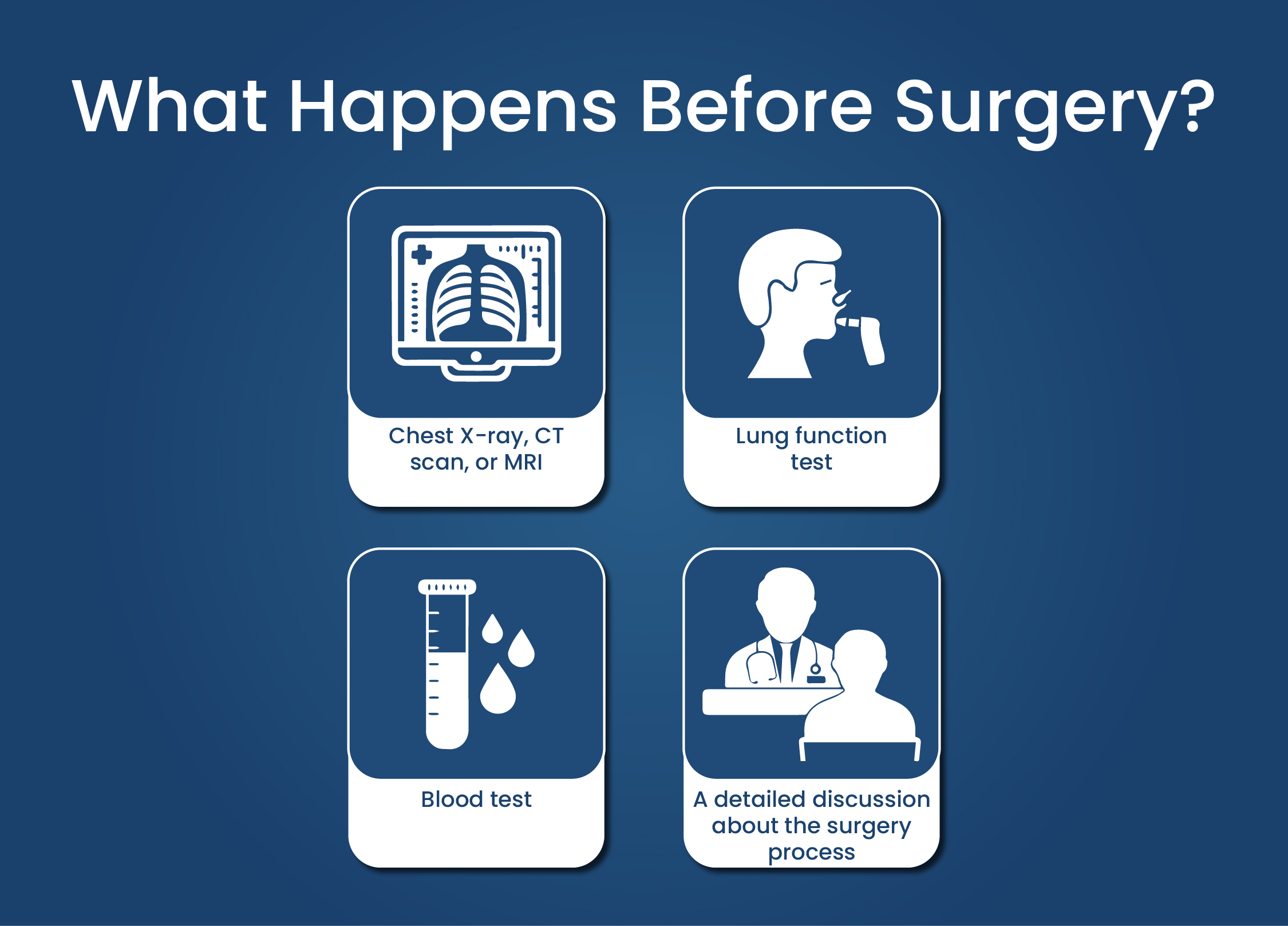
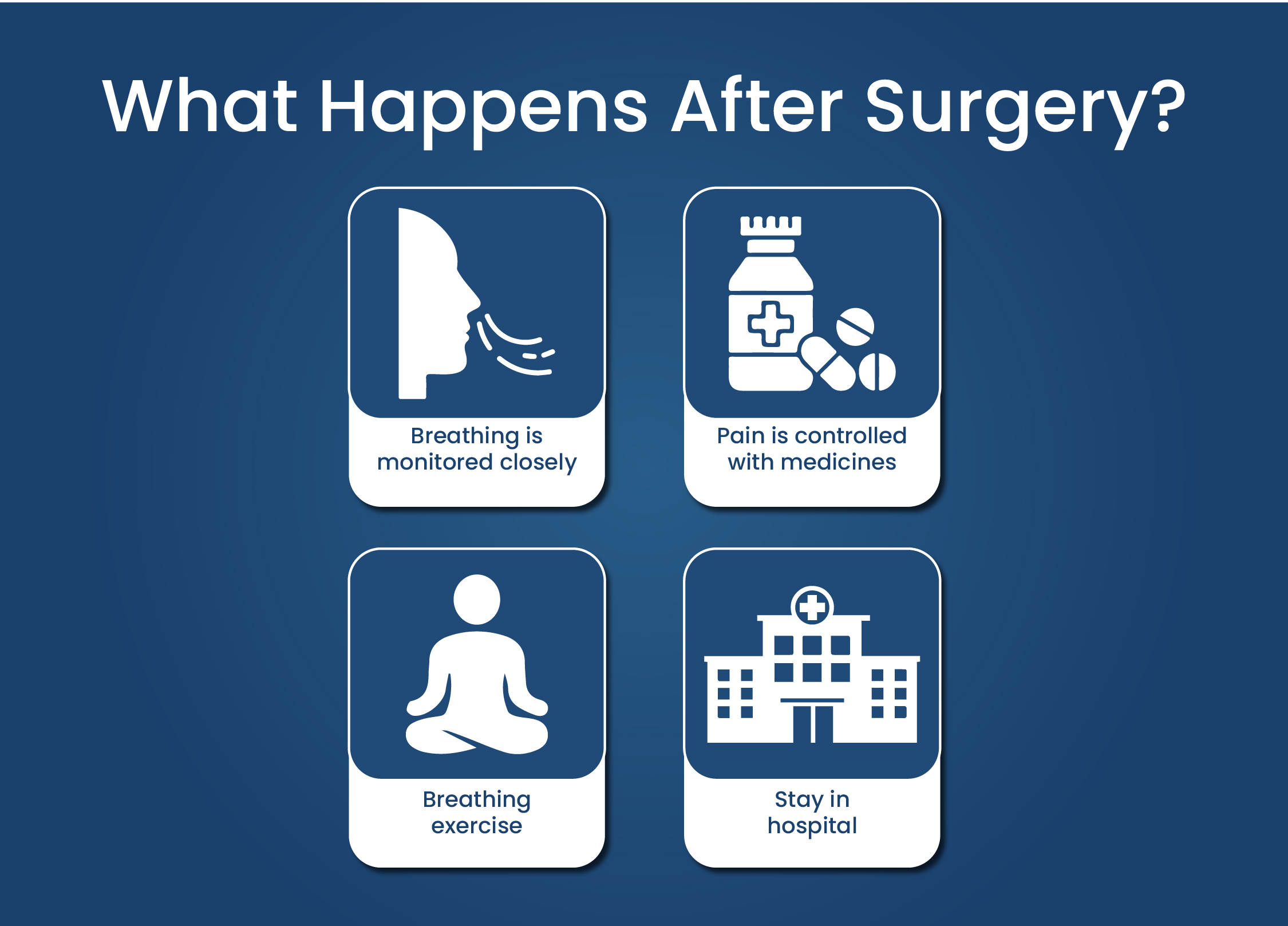
After Surgery
Once the surgery is done, the patient is taken to the recovery area where:
- Breathing is monitored closely
- Pain is controlled with medicines
- Breathing exercise are taught to help the lungs work better
- Most patients stay in hospital for a few days to 2 weeks depending on the surgery type.
With proper care, most people return to their normal life within a few weeks.
Why Expertise Matters?
Thoracic surgery is complicated because the organs involved are delicate and crucial for life. An experienced thoracic surgeon makes all the difference. Dr. Sanjay Sharma is one of the most trusted names in this field, known for precise, safe, and advanced thoracic surgery techniques.
People in Mumbai often consult with a thoracic surgery specialist in Bandra or look for the best cancer surgeon in Cumbala Hospitalfor safe and effective treatment.
The Importance of Timely Surgery:
When dealing with lung or esophageal cancer, or any other serious chest condition, waiting too long can be dangerous. Early surgery helps by:
- Removing the disease before it spreads
- Preventing serious breathing problems
- Reducing long-term health risks
- Improving chances of full recovery
Patients are encouraged to consult a specialist as soon as they notice symptoms.
Thoracic surgery is a key solution for serious chest problems, especially cancer. Thanks to modern surgical techniques, it is safer, less painful, and helps patients return to normal life faster than ever before.
If you or your loved ones experience persistent chest problems, it’s important to consult a trusted thoracic surgeon. Early treatment can make a life-changing difference.